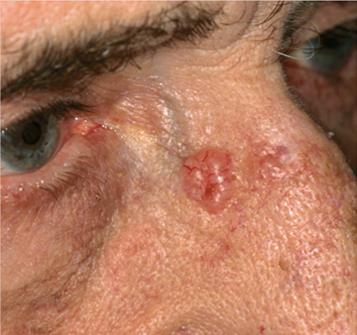How To Spot Skin Cancer
by Dr. Lara Devgan
Most of us don't give a second thought to those pesky moles and freckles that crop up on our bodies over time. We're healthy, and we take care of ourselves, we think. They must be nothing, right?
Unfortunately, nothing could be further from the truth. Skin cancer is the most common form of cancer in the United States, with more than two million people diagnosed every year.
In fact, each year, there are more new cases of skin cancer than new cases of breast cancer, prostate cancer, lung cancer, and colon cancer COMBINED. One in five Americans will get skin cancer, and one in three Caucasians will get basal cell carcinoma (the most common form of skin cancer) over the course of their lives.
How can you tell if that spot is suspicious?
If it's new, different from other spots, or in any way concerning, see a doctor. Many people use the "ABCDE" rule.
A = Asymmetry
If the spot is asymmetrical, lopsided, or uneven looking, it could be a cancer. Most normal moles and freckles are even circles or ovals.
B = Border
If the spot has a jagged or irregular border, it could be a cancer. Most normal moles have a smooth straight-line border.
C = Color
If the spot has a variable color or several different colors, it could be a cancer. Most normal moles are even in pigmentation.
D = Diameter
If the spot is larger than 4 to 6 mm in diameter (about the size of a pencil eraser), it could be a cancer. Most normal spots are small.
E = Evolving
If the spot is evolving, growing, or changing over time, it could be a cancer. Most normal moles, freckles, and birth marks are relatively constant over time.
What can you do to guard against skin cancer?
1. Wear a zinc and titanium based sunscreen every day.
Make this a habit with absolutely no exceptions, like brushing your teeth or putting on your shoes. Sunscreen is a must.
2. Limit your sun exposure.
Try to avoid spending time outside between 10am and 2pm, when the sun's rays are the strongest. Almost half of our lifetime sun exposure occurs between ages 19 and 40, when it's common to spend a lot of time outdoors.
3. Pay attention to your body.
Do a monthly surveillance of spots on your body. Pay attention to any changes. See a dermatologist regularly for skin exams.
4. Seek help early.
Skin cancers that are caught early are extremely survivable and treatable, and surgery to remove them is much less disfiguring. See your doctor right away for any concerns.





















